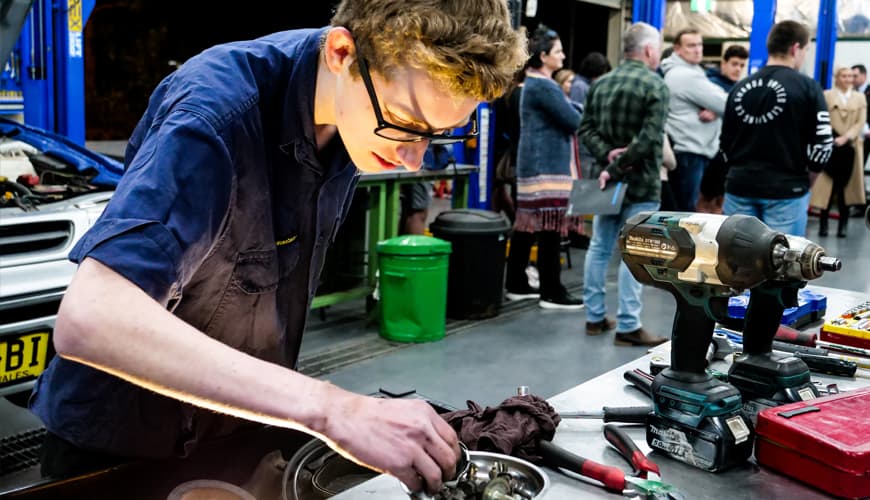Australia’s cultural bias towards university is to its detriment. With a looming national skills shortage, Australia risks losing its position as one of the world’s most advanced economies.
We simply don’t have enough skilled workers to keep up with workforce changes and need a shift in perspective when it comes to our vocational education and training (VET) system in order to go down the right path.
Problematic Perceptions
Many young Australians and their parents don’t consider VET as a legitimate higher education pathway, even if it is more suitable for them than university.
In fact, VET is sometimes seen as an option for those who did not gain entry into university.
This misguided perception is actually fuelling a disconnect between the skills young people are graduating with, and the employment opportunities actually available to them.
Jobs across many industries are also becoming scarce due to an oversupply of students taking on the same handful of subjects. Because of this, the post-school pathway to employment can become lengthy, costly and emotionally taxing for many young people.
A greater emphasis on vocational education can also help to create a more diverse student population, with marginalised groups who may not have otherwise considered further education having a better opportunity to do so.
A Change of Perspective
What is lost in this equation is that for many people, an equally valid pathway is VET. The 50% of high school graduates who aren’t going to university should be informed about the benefits of VET as a pathway to a meaningful career. Universities and VET should be equal considerations for young people looking to train for the high-value jobs of the future.
In fact, in many cases, vocational education can be a lower-risk, higher-reward option for some current university students to consider instead.
The question is, what can be done to shift the cultural bias towards university and paint a more accurate picture to young people of their post-high school pathways?
In order to shift the cultural bias towards university and provide broader options to young people, the dialogue needs to extend to a wider audience. The quality and variety of options need to be better illustrated to parents and students, celebrating both traditional and unconventional vocational trades.
Countries like Germany are a fantastic example, where over 60% of the population took up a vocational education over a university education, allowing them to remain a powerhouse of innovation, trade and technology.
Showcasing the broad spectrum of careers available through a vocational education is a fantastic way of shedding light on the opportunities, particularly by highlighting things like once-in-a-lifetime infrastructure projects that apprentices have a chance to work on.
Such a public education campaign should also target parents who may inadvertently be pressuring their children into a university course that they will not truly flourish in.
Schools should also better inform young people of their options, perhaps even including entrance into VET as a key performance indicator. Career expos and visits by those in VET fields will also be an illuminating experience.
The real-world benefits of a vocational education should also be highlighted to young people.
For example, vocational qualifications in construction, engineering and commerce typically lead to higher lifetime incomes than what low-ATAR university students are likely to earn, especially those in oversaturated fields like science and the humanities.
Moves like Victoria’s recent subsidised VET programs shows the value of societal investment in VET. Higher-level vocational education programs, such as degree-level apprenticeships, can also help to attract would-be university students who are struggling with the decision-making process.
Federal and state governments, as well as industry, also need to ensure that VET provision is ordered and resourced, providing students with suitable educational experiences.
Our implicit bias towards university needs to shift in order to meet future skills shortages and ensure better employment outcomes for the population. Government, industry and VET institutions all have their part to play to ensure a brighter future for Australia’s young people.
Article from training.com.au written by Hania Syed

